The Namib, a sea of red sand along the Atlantic coastline, and the oldest desert on the planet, lends its name to Namibia. A country of astonishing contrasts, Namibia is celebrated for its vast open landscapes, infinite blue skies and starry nights. Over the years, a number of cultural influences have contributed to the unique atmosphere of Namibia.
At various times Germany, Great Britain and South Africa governed the territory, but it was with the eventual independence of Namibia in 1990 that the country was able to develop its multicultural character and reinvent itself. There is a distinctive Namibian character that freely blends African styles with European influences on architecture, food, customs and art.
Built in an environmentally sensitive manner, primarily from wood, canvas and thatch, in an attractive ‘afro-village’ style, Sossus Dune Lodge will offer guests an evocative and life changing experience.
Situated within the park, guests benefit from being able to reach Sossusvlei before sunrise, and to stay until after sunset, and on their return after an exhilarating day, to relax in the tranquillity and splendour of the Namib Desert, under the spectacular African sky.
As the only lodge inside the Namib-Naukluft National Park, Sossus Dune Lodge has a superb location. This makes it ideal for those who want to beat the crowds to Sossusvlei, or stay late to photograph the sunset. As a result, it is very popular, so be sure to plan you trip well in advance if you want to stay here.
Accommodation is offered in 25 spacious chalets – thirteen on the left of the main area, with views of the dunes; and the remaining 12 chalets, on the right of the main area, having a view of the mountains and the Sesriem Canyon.
The chalets are linked by raised wooden walkways.
All chalets are built in an eco-friendly Afro-style manner using wooden frames, canvas for walls and topped by a thatched roof.
Activities:
Namib Desert Sossusvlei drives
Sossusvlei sunset drives.
Guided nature drives.
Namib by night – guided after dinner stroll and stargazing.
Guided walks to the Sesriem Canyon.
Dune 45 and the Petrified dunes.
Excellent photography opportunities.
Cost per person per night sharing – Please enquire through the button and form on this page.
Includes:
Breakfast
Other activities are available and on request.
Rates are subject to change due to currency fluctuations and supplier changes.
Situated on the 210km2 private Kulala Wilderness Reserve south of Sesriem, Kulala Desert Lodge offers a close and spectacular view over the Namib Sand Sea to the west, and the Namib-Naukluft Mountains to the east. Originally opened in 1996, the lodge was built to make the most of the vista. In addition to the dunes on its doorstep, however, its defining attraction remains a private entrance from the reserve into the Namib-Naukluft National Park.
At the back of each chalet, a stepladder leads up to a private roof terrace above the bathroom, where guests can sleep out under the stars in comfortable bedrolls. Outside, on a private covered deck to the front of the kulala, a small wooden table and two canvas directors’ chairs are perfectly placed to enjoy the views of the surrounding desert.
The most popular of the activities at Kulala Desert Lodge is a guided 4WD morning drive into the dunes, to include a visit to Sossusvlei and Dead Vlei. The Kulala Wilderness Reserve has its own private entrance into the Namib-Naukluft National Park, less than ten minutes’ drive from the lodge, so participants don’t need to access the dunes via the gate at Sesriem. However, guests who prefer to explore the dunes on their own must drive 14km to the entrance of the Kulala reserve, from where it’s about 19km to the Sesriem gate, then a further 60km through the park to the 2WD parking area.
Please enquire using the Book Now buttons and fill out your details on the form.
Includes:
Accommodation, all meals, twice daily scheduled camp activities, park fees, laundry, Namibian VAT & Tourism Levy, and local drinks.
Rates are subject to change due to currency fluctuations and supplier changes.
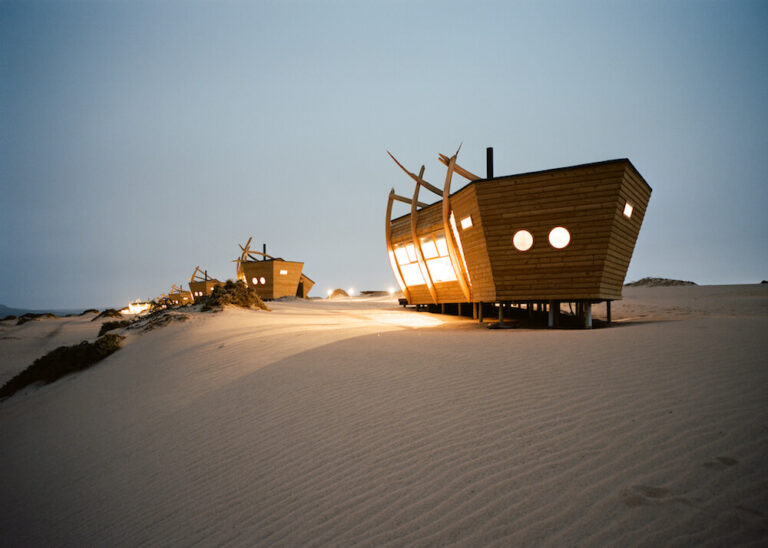

Uniquely designed around the enigmatic shipwrecks that line Namibia’s Skeleton Coast, there’s nowhere on the continent quite like Shipwreck Lodge. In fact, there’s nowhere on the continent quite like the Skeleton Coast. It’s a raw, rugged and impossibly remote slice of African wilderness, where towering dunes and wind-swept plains roll as far as the eye can see, buffeted by the icy Atlantic seas.
But there’s much more to the area than simple isolation. Stay at Shipwreck Lodge and game drive in search of desert-dwelling fauna; discover the enchanting desert flora (succulents and lichens); sit atop the dunes as the sun sinks below the horizon; spend the day beach-combing for whale bones and debris from centuries of shipwrecks; and marvel at the geologically-remarkable Clay Castles. Really, there’s nowhere like it on earth.
This camp was built to match the remarkable scenery of the Skeleton Coast, and each of the 10 rooms have been constructed to resemble the shipwrecks that line the beach. There are eight twin or double rooms, and two cabins can take extra beds if you’re bringing the kids, all ensuite and solar-powered. Well, apart from the wood burning stove but on the chilly evenings and mornings, it’s most definitely a welcome addition! In the centre of camp, you’ll find an equally as innovatively-designed lounge and restaurant with a wide, wraparound deck and uninterrupted views across the sand all the way to the Atlantic Ocean.
The Skeleton Coast is an area known for its extraordinary landscapes and wildlife sightings are rare – but when do you spot something, it’s a magical experience. First up are the desert-adapted elephant, digging deep beneath the sand for the last vestiges of water. Then, making use of the wells left behind by the pachyderms are giraffe, lion and baboon, and perhaps even a brown hyaena or two, but sightings are rare. There are also thousands of plants and insects that flourish in the sand, surviving from the moisture of the cold fog that drifts inland from the ocean. Incredible stuff – but that’s not all. Marine life positively thrives, feeding off the nutrients in the Atlantic, and the most iconic species are the Cape fur seals that line the rocky shoreline in large colonies. Birdlife is also prolific and you should most certainly pack your binos for Rüppell’s korhaans and Benguela long-billed larks. Further toward the coast, you should also be able to spot tractrac chats, as well as jaegers and skuas around the seal colonies.
Please enquire using the Book Now buttons and fill out your details on the form.
Includes: Accommodation, all meals & beverages, guest laundry, transfers between Mowe Bay and Shipwreck Lodge, park entry permit, daily activities, expert guiding & VAT.
Excludes: Premium brand drinks, gratuities and fully comprehensive personal travel insurance.
Rates are subject to change due to currency fluctuations and supplier changes.
Where the elephant roam
In a country jam-packed with vast, spectacularly beautiful landscapes, Kaokoland may just be the most incredible of them all. Deep in north-western Namibia, the area is a melee of towering mountains, sand dunes, and huge expanses of desert, scattered with unique wildlife and nomadic Himba settlements. It’s also one of Namibia’s most remote and wild environments, and one that not many will get the chance to discover in a lifetime.
And that’s exactly why we’ve decided to build Hoanib Valley Camp. A joint venture between the local communities and the Giraffe Conservation Foundation, the world’s only Africa-wide giraffe conservation organisation, the camp is an elegant, intimate affair that immerses you into the wilds of the desert. The six rooms blend seamlessly with the environment, offering a simple aesthetic that matches the rugged landscape down to a tee. Days are spent tracking endangered rhino, desert-adapted elephant, and of course desert-adapted giraffe, before retiring to your private veranda to marvel at the magnitude of your surroundings (G&T in hand).
Hoanib Valley’s six guest tents blend almost perfectly into the rugged environment. The colours, textures and patterns are inspired by the experience of the Hoanib; the rich ochre of the dunes, the geometric patterns of the Himba people and, of course, the giraffe that inspired the project. True to the ethos of Natural Selection, we’ve sourced materials locally, and you’ll find furniture shaped by the local Rundu carpenters and Himba carvers, and baskets weaved by the people of the Omba Project in Windhoek. The whole camp is a clean and green sort of place, leaving virtually no footprint on this fragile eco-system. It’s entirely solar powered to ensure carbon emissions are kept to a minimum, and the tents sit on decks made of a wood, bamboo and 70% recycled-material composite.
Hoanib Valley Camp is open year-round, but the two seasons (the green season and the dry season) offer two remarkably different experiences.
The summer months of December to March are the green season. When the rain comes, the rocky landscapes are transformed into a rich, emerald carpet, and, depending on the level of rainfall, the dry riverbeds flow (albeit briefly) with life-giving water. Dramatic sunsets are littered with heavy clouds, and short bursts of rain clear the dust from the air. It’s fresh, vivid, and although temperatures can be high, it’s a lovely time of year to visit.
Then the rain stops, and the land dries slowly into its iconic, desert state. Midwinter (May to July), brings chilly temperatures in the mornings and evenings (that’s where the warm jacket comes in) but as the season progresses the temperatures rise steadily. By October, the land is at its driest and the temperature at its warmest, and as the desert-elephant begin to congregate around the last drops of water in the river valleys, you’ll be rewarded with some truly incredible sights.
Landscape
Deep in the north-western corner of Namibia, Kaokoland is one of the most remote, wild and marvellously unique areas of the country. It’s a land characterised by rolling dunes, rocky mountains and desert plains all criss-crossed by ancient, dry riverbeds, the roads of the area. Temporary Himba settlements dot the landscape, and scattered herds of desert-adapted elephant and giraffe are a common sight.
Hoanib Valley Camp itself is located in the Sesfontein Community Conservancy, our joint partners in the area. The camp itself is set back in a hidden valley and surrounded by a range of jagged mountains, just outside the private 500 square kilometre Palmwag Concession. Views are of the ephemeral Hoanib River that teems with resident elephant, giraffe, oryx and springbok. Although parts of the land have been designated ‘concession areas’ tourism is still limited, making a visit to this unspoiled corner even more memorable.
Wildlife
The wildlife of the Hoanib Valley is perfectly at home in the arid environment, and learning about their survival techniques is fascinating. Game drives will reveal desert-adapted elephant, as well as stately desert-adapted giraffe, and, if you’re very lucky, desert lion. Zebra, klipspringer and kudu move freely through the mountains, and you’ll find hardy herds of springbok and oryx, as well as steenbok picking their way across the dust-blown landscapes. The region is home to the largest population of free-ranging black rhino, and a day (or even a morning or an afternoon) tracking the magnificent beasts is an absolute must. Bird watchers, keep your eyes peeled for Monteiro’s hornbills or Ruppell’s korhaans in the valleys, and the imperious Verreaux’s eagle in the mountains.
You’ll find Hoanib Valley Camp in the Kaokoveld region of north-west Namibia – an area that has long held an allure for our partner, Dr Julian Fennessy, Africa’s foremost giraffe expert and the go-to guy for information on the hardy population of desert-adapted giraffe who live here.
Our other partner in this venture is the Sesfontein Community who live some way inland of camp. When we first started to build Hoanib Valley Camp, we employed 20 labourers from Sesfontein to help us and now, 80% of our staff hail from there. We also pay 8% of our turnover as rental to the community, which they in turn use to finance salaries for rhino rangers and game guards.
Please enquire using the Book Now buttons and fill out your details on the form.
Includes:
Accommodation, all meals, twice daily scheduled camp activities, park fees, laundry, Namibian VAT & Tourism Levy, and local drinks.
Rates are subject to change due to currency fluctuations and supplier changes.

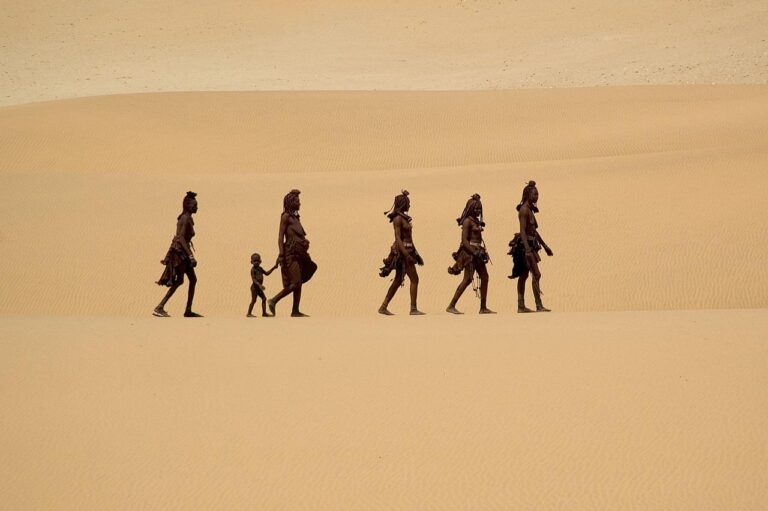
Set under verdant trees on the banks of the Kunene River, Serra Cafema is one of the most remote camps in southern Africa. Guests can truly disconnect, unwind and relax to the sound of rushing water, and explore one of the driest deserts in the world. Respectful interaction with the semi-nomadic Himba community, fascinating nature walks, boating (water levels permitting), and low-impact guided quad-bike excursions complete the experience.
The eight chalets are set on elevated decks and crafted in wood, canvas and thatch to create a unique camp that is at one with its surroundings and celebrates the culture of the Himba people. The Ozonganda (Herero, meaning “main area”) affords spectacular views over the Kunene River.
Constructed from canvas and thatch, each spacious room has a large double bed surrounded by a mosquito net, lounge area, an en suite bathroom and private veranda. The large glass doors all along the front of the room can be opened giving stunning views across the Kunene River to Angola beyond.
Both are done sensitively so as not to disturb this fragile environment. You can also take drives and walks into the Hartmann’s mountains, where the scenery is stark but breath-taking. Boat trips along the Kunene add another dimension – water birds abound and crocodiles bask – so different to the arid landscape that surrounds this oasis. There is also the possibility of visiting a Himba community, which too is done with sensitivity.
Please enquire using the Book Now buttons and fill out your details on the form.
Includes:
Accommodation, all meals, twice daily scheduled camp activities, park fees, laundry, Namibian VAT & Tourism Levy, and local drinks.
Rates are subject to change due to currency fluctuations and supplier changes.
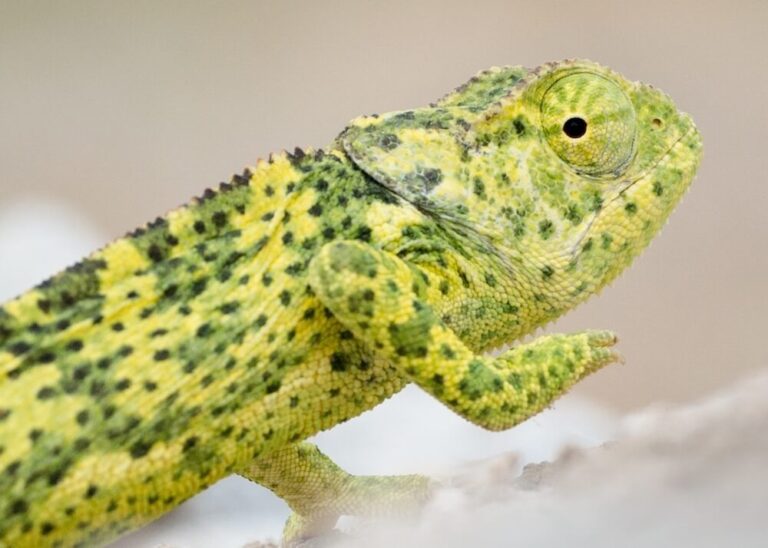

In the middle of northern Namibia’s arid, captivating savannah, bordering the world-famous Etosha National Park, is Safarihoek Lodge. Perched on top of a hill, overlooking the plains below, Safarihoek is a stylish sort of place, and you’ll find cool, thatched chalets all with private decks, a double-storey photography hide, and a swimming pool with 180-degree vistas of the brilliant savannah.
But if there’s one thing about Safarihoek, it’s the location. Everywhere you turn, the rugged Namibian savannah stretches into the distance, with only a spangly tree here, and a spiky bush there. The wildlife roams freely across the never-ending space, unhindered and unobstructed. This is a place of silence and solitude, and a rare opportunity to be at one with nature and the animals that thrive here.
The chalets are raised high above the savannah on wooden platforms, each of the 11 chalets look out over the ambling zebra and romping elephant on the plains below. Take a seat on your private deck and watch wild Africa wander by, or escape the heat inside; the view is just as spectacular wherever you choose to sit. Under the thatch roofs of the chalets, you’ll find large double or twin beds, and a small writing desk, minibar and coffee station. All bathrooms have air conditioning and are ensuite (with indoor showers), and if you can’t bear to tear your eyes away, some have outdoor showers with a view too.
In the centre of camp, you’ll find a large lounge area, wine cellar, dining area, and a small curio shop all under thatch. On the chilly evenings of the dry season you’ll probably eat inside, watching the wild through the large glass windows, then in the warmer months, it’s all about the alfresco dining on the outdoor deck. There’s also a cosy outdoor seating area complete with roaring fire, and a perfect spot for keeping an eye on passing four-legged creatures. Drinks are served from the outdoor bar and can also be taken to the swimming pool, a cooling space with the same infinite views of the plains below.
Please enquire using the Book Now buttons and fill out your details on the form.
Includes: Accommodation, all meals & beverages, guest laundry, daily activities, expert guiding & VAT.
Excludes: Premium brand drinks, park entry fees, gratuities and fully comprehensive personal travel insurance.
Rates are subject to change due to currency fluctuations and supplier changes.
Onguma Tree Top Camp is a place to savour, small bits at a time. Designed for those travellers who would like to truly experience the bush in all its raw splendour. A place where giraffe, zebra, lion, and many other species of antelope come to quench their thirst.
Onguma Tree Top Camp is a place where birds and animals become your daily companion. Onguma – a place you will not want to forget.
The Camp is built on wooden stilts amongst the tree tops with full views over one of the most beautiful watering holes on Onguma Game Reserve. The Camp consists of 4 thatched rooms with canvas walls, a deck overlooking the waterhole, a lounge, dining room and interactive kitchen. A maximum of 8 guests (including guide) can be accommodated.
This intimate camp is ideal for a small groups travelling together as the four stilted tents only accommodate between 4 and 8 guests. The Onguma Tree Top Camp is unfenced and therefore no children under the age of 12 years will be allowed. Children 12 and above stay in their own room at full price.
Please enquire using the Book Now buttons and fill out your details on the form.
Includes: All meals, local beverages, 2x activities per day guided.
Excludes: Government levy taxes, park entry fees, transfer, personal travel insurance, gratuities, premium export beverages and any items of a personal nature.
Rates are subject to change due to currency fluctuations and supplier changes.
https://www.youtube.com/watch?time_continue=3&v=cLV6y0B-sf4


The Dune Camp provides a more down-to-earth, yet stylish, experience. It has an unparalleled natural charm, which courts the young and more adventurous traveler.
Positioned on the edge of a 250-metre high dune, the Dune Camp sleeps a maximum of 16 guests in a totally pristine setting. The tents are pitched on wooden platforms and are comfortable and spacious including a private bathroom. A generous deck allows for safe sleep-outs under the stars, imparting a rather civilized camping experience.
The main tent houses a lounge, dining area and an open-plan kitchen where you can chat to the desert chef, while he prepares lavish meals. Enjoy a cold drink around the campfire on the sundowner deck, where fellow travelers can be met and stories of the day will make their rounds in true African tradition.
The charm of the camp lies in its tranquil, intimate atmosphere, capturing the romance of a bygone era. Dune Camp requires a minimum stay of two nights and a day-safari with picnic lunch en-route is part of the package.
Please enquire using the Book Now buttons and fill out your details on the form.
Includes: Shared activities and meals. A 50% discount will be offered for every third night, providing guests stay in same camp/room. 50% accommodation discount on the 3rd and 4th nights, this is highly recommended and resembles a handsome discount on the overall stay.
Excludes: All drinks and extra activities like hot -air ballooning, scenic flights, horse-riding, massages, bush barbeques, sleep-outs, gratuities, transfers and items of personal nature.
Rates are subject to change due to currency fluctuations and supplier changes.
Opening in March 2020, Kwessi Dune Lodge is located deep in Namibia’s striking NamibRand Nature Reserve, a vast desert wilderness of over 200,000 hectares. With its rolling desert plains and backdrop of craggy mountains and iconic red dunes, this is a place where time seems to stand still and the space is never-ending. Here, it’s not about chasing big game but rather soaking up the beauty of the colourful landscape, admiring the antelope that scatter the sand, and gazing at the stars the light up the night sky.
At Kwessi Dune lodge, you’ll find 10 cool and comfortable (and air-conditioned) chalets all with canvas walls and thatched roofs. Each bedroom has a separate ‘star gazer’ room, completely open to the sky, and the perfect spot from which to watch the celestial theatre show above. Views from the rooms, the main area and the swimming pool are of the vast, desert vistas and when you can bear to tear your eyes away, enjoy quad biking, scenic drives and walks, hot air ballooning, helicopter flights, horse riding and day trips to Sossusvlei.
In the bedrooms, you can expect vintage four-poster beds, striped canvas walls and a separate ‘star gazer’ room that’s completely open to the sky for maximum galaxy-gazing as you fall asleep. Each bedroom also has an ensuite bathroom with both indoor and outdoor showers and a shaded, outdoor veranda. High thatched roofs will keep you cool during the hot desert days (and nights!) and you’ll be pleased to hear that the bedrooms are air conditioned too.
The view from the lodge is spectacular and the glass windows and doors at the main area look out onto the undulating sand that only ends when it meets the mountains, far in the distance. Inside, there’s a well-stocked bar, library area and several seating and dining areas. When the sun rises in the morning, head to the camp fire for a morning cuppa, whilst in the heat of the day, the swimming pool is the only place to be.
Please enquire using the Book Now buttons and fill out your details on the form.
Includes: Accommodation, all meals & beverages, guest laundry, daily activities, expert guiding & VAT.
Excludes: Premium brand drinks, park entry fees, gratuities and fully comprehensive personal travel insurance.
Rates are subject to change due to currency fluctuations and supplier changes.
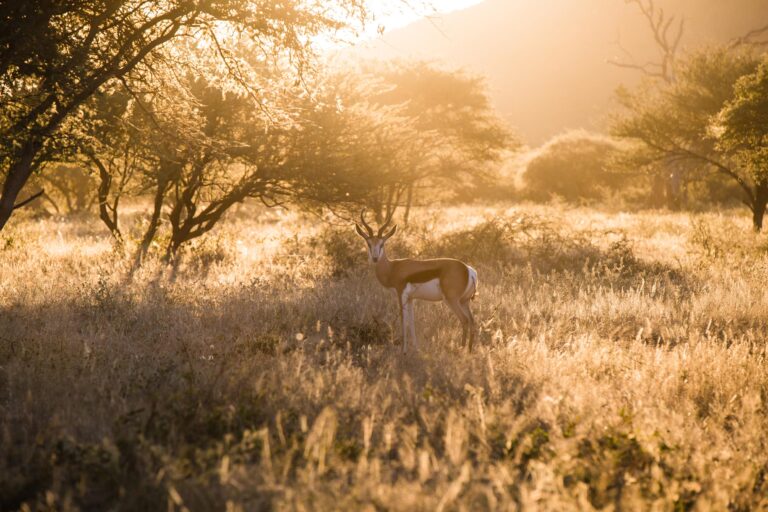
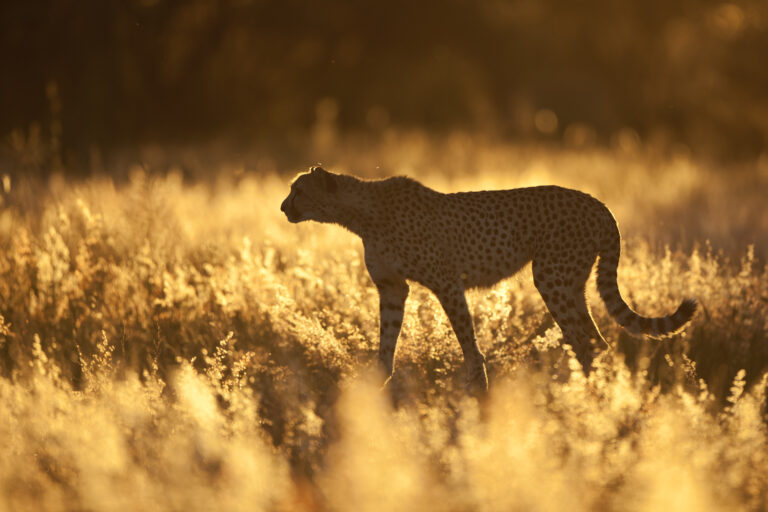
The family-run Okonjima Lodge rests at the foot of the sandstone Omboroko Mountains amidst Acacia thornveld in a Malaria-free area. It is halfway between Namibia’s capital city, Windhoek, and the Etosha National Park – only a two-and-a-half-hour drive or a brief flight into the reserve’s private airstrip.
Okonjima Nature Reserve is equally famed for frequent cheetah and leopard sightings on its safaris, as well as The AfriCat Foundation. Since being founded in 1991, AfriCat’s mission has been to make significant contributions to conservation, while trying to ensure the survival of Namibia’s predators in their natural habitat. It undertakes research, community support and environmental education projects, as well as conservation work to rehabilitate carnivores such as cheetah and hyaena.
Okonjima Lodge offers a wide spectrum of accommodation offerings, ranging from well-appointed private camp sites to breathtaking safari lodges. The award-winning Okonjima African Villa and Private Bush Suite offer an unparalleled luxury safari experience, indulging guests with a private chef, guide and safari vehicle. Okonjima guarantees a unique African safari to remember.
Our activities delight and educate even the most experienced of travellers. Mornings begin early out in the Okonjima Nature Reserve lead by our experienced guides. In true African style, days end with game drives through the acacia thicket in search of elusive leopards followed by a sundowner. Whether you hike, bike or are an avid bird watcher, there are endless ways to spend your time at Okonjima.
OKONJIMA, THE HANSSENS AND AFRICAT.
Okonjima, home of The AfriCat Foundation, was established as a small ‘guest farm’ in 1986. For many years, Val (VJ) & Rose Hanssen had been avid cattle farmers until the need for solutions to increasing livestock losses and post-independence interest in Namibia as a tourist destination, changed the face of Okonjima, as well as that of Carnivore Conservation.
With the family still at the helm (now the next generation), Okonjima now encompasses a dedicated team and a variety of accommodation facilities, offering you, a truly Namibian stay…
Established in 1993, The AfriCat Foundation started off as a sanctuary for Cheetah and Leopard rescued from irate, livestock farmers. Today, AfriCat is dedicated to the protection and long-term conservation of all large carnivores in Namibia and has since become renowned for much-needed; “Environmental Education, Carnivore Research, Rescue, Release & Rehabilitation programmes, and Carnivore Welfare, Human Wild-life Conflict Mitigation and Community Support projects – throughout the whole of Namibia”.
The AfriCat Foundation is based in the private, 200km2 Okonjima Nature Reserve (central Namibia) and along Etosha’s south-western boundary (northwest Namibia). AfriCat North, strives to mitigate Human- Wildlife Conflict on farmland especially with regards to the lion (Panthera leo), by educating the youth, encouraging adapted livestock management and conducting essential research & monitoring of wild lion populations.
Okonjima and AfriCat HQ: A symbiosis @ work: This mutually beneficial relationship allows for interested visitors to experience, first hand, the works of The Project, gaining valuable insight into carnivore conservation and, at the same time, creating the platform for donating much-needed funds to The Project and its Programmes.
Our dream is to turn our 55 000acre private Nature Reserve on Okonjima – that was once denuded farmland, back to it’s natural state, last seen 200 years ago. This dream must be sustainable and a benefit to local communities for it to survive the tide of change in Africa.
This ongoing project headed by the Hanssen Family has nearly removed all internal fences and the management of water resources, hides, the removal of undesirable bush encroachment and new bush roads is ongoing.
Okonjima is a family run business. Wayne, Donna and Rosalea Hanssen who co-own and live on the property, bought Okonjima from their parents in 1993 – turning, what was then a cattle farm, into a 22 000ha private conservation project.
Tammy Hoth – nee HANSSEN joined the AfriCat family by merging her foundation AFRI-LEO with The AfriCat Foundation in April 2010. Her human-wildlife conflict project is now called – AfriCat NORTH. AfriCat North borders the south western boundary of ETOSHA NATIONAL PARK, (northwest Namibia) AfriCat North is based along Etosha National Park’s south-western boundary and strives to mitigate human-wildlife conflict thereby reducing poverty, to keep lions in their natural habitat, to prevent the exploitation and inhumane treatment of lions and to ensure that captive populations are well cared for.
The programme’s projects focus on medium to long term workable solutions through education, improved livestock management and protection, and research and monitoring.
AfriCat on OKONJIMA will focus on – ISLAND-BOUND rehabilitation & research in the 22 000ha Private Nature Reserve; rescue and release, carnivore welfare and environmental education.
Please enquire using the Book Now buttons and fill out your details on the form.
There is a range of accommodation here and we would be happy to assist get you to the right one.
Please enquire if you wish to find out more about this property.
Includes: Dinner, Bed and Breakfast.
Extra Activities:
Leopard Activity, Game Drive, AfriCat Carnivore Care Centre and Off the beaten track.
Rates are subject to change due to currency fluctuations and supplier changes.
Pathways wind through the lodge to reveal our 51 luxurious suites tucked between indigenous trees and soft green lawns. These spacious suites exude the classic safari aesthetic you’d expect from a five-star resort. The colonial style restaurant and viewing deck boast magnificent views across a busy waterhole.
The elegantly decorated main lodge serves as the main dining area. Mouth-watering dishes are prepared to the highest standards using the freshest ingredients, some grown in the back garden.
Dining at Old Traders Lodge is a culinary adventure, combining regional African cuisine with the multitude of cooking styles left behind by early explorers of this great continent. We stock a wide selection of South African wines, spirits and liqueurs. High tea is served every afternoon with delicious sweet and savoury eats. A sumptuous buffet-style dinner is served after guests return from their late afternoon safari.
European traders and missionaries were the first recorded people who travelled through the area of Namibia that now contains Erindi, probably from Walvis Bay northwards in the direction of Ovamboland in the mid-1800s. But evidence shows that other people used to inhabit this land such as the indigenous Herero and San tribes. There are signs of seasonal Herero farmers having moved through the area, as well as significant San rock paintings and engravings on “Big Bushman” Mountain.
In 1986, the Joubert brothers bought the land from the Imperial Cold Storage and Supply Company (ICS). They were determined to turn it into a model cattle farm, so they invested money, time, and energy into the project. By the early 1990s, the brothers realized that to increase overall profitability of the farm, they would need to gradually start stocking the farm with game.
Natural food resources was a major concern, so to avoid competition with the cattle, they introduced plains game. They fenced 3 000 hectares and put 55 giraffes on it in 1992. This was a noticeably successful venture, so more game such as the Blue Wildebeest and African Elephant were brought in from Etosha National Park. The farm was already home to wild animals like the Gemsbok, Kudu, Leopard, Cheetah, Honey-Badger, Baboon and many others.
However, to concentrate fully on conservation and turn Erindi into a five-star ecotourism destination, the owners realized that the land would have to be briefly utilized for hunting purposes. A four-year period as a trophy hunting outfitter helped to raise the much-needed funds to continue their conservation dreams. Cattle farming had been completely phased out, and the reserve had been fitted with all the game management requirements. By 2008, Old Traders Lodge was erected and open for visitors. Since then, Camp Elephant was constructed, and several successful conservation programs run concurrently.
Please enquire using the Book Now buttons and fill out your details on the form.
Includes:
Dinner, Bed and Breakfast
Please enquire about wildlife related activities to add your travel plans.
Rates are subject to change due to currency fluctuations and supplier changes.